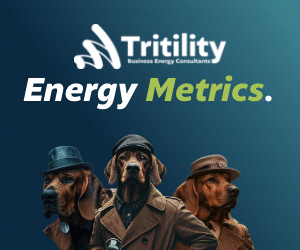As the continent faces the challenge of decarbonising its energy system, the size of the task ahead of us can’t be understated. Targets around renewable capacity, heat pump installations and electric vehicles all require skilled workers. The World Economic Forum emphasises that achieving a net-zero economy by 2050 will require millions of skilled workers across sectors, including manufacturing, energy, and digital technologies that support sustainable practices. And it’s the digital skills where the current challenge is most acute.
While challenges are present, Europe has made significant strides in its energy transition. The International Energy Agency notes electricity generation from solar PV surpassed coal in the European Union in 2024, with solar’s share of the power mix exceeding ten per cent. While this is an achievement to celebrate, we cannot rest on our laurels. The European Union (EU) has set ambitious climate goals to reduce greenhouse gas emissions by at least 55% by 2030 and achieve climate neutrality by 2050. Continual, and accelerating progress will be essential to make this happen.
And digital skills will be crucial for Europe’s energy transition to be a success. The integration of digital technologies such as artificial intelligence (AI), the Internet of Things (IoT) and big data analytics into the energy sector can revolutionise how energy is produced, distributed, and consumed. These technologies enable real-time monitoring, predictive maintenance, and smart grid management, leading to increased efficiency and reduced carbon footprints. But the question remains as to how we make these changes a reality.
Policy is a natural lever, and the EU has implemented a robust policy framework to support the transition, with initiatives like the Digital Strategy and the AI Strategy tying climate and digital goals together. But the stark reality is, if we don’t have the skilled workforce available to implement these strategies, we won’t make enough progress.
It’s here where Europe faces a significant challenge. We face a skills shortage, with only 55.6% of the EU population having at least basic digital skills. The current workforce lacks the necessary digital competencies to fully leverage the potential of emerging technologies. To bridge this gap, businesses and governments must collaborate to upskill workers and attract new talent. Research from WEDEF’s Future of Job Report highlights that the rollout of large-scale reskilling programmes continues to be a challenge for many organizations, with 59% of workers requiring reskilling training by 2030.
The same research states that the number of employees wanting to learn AI skills has grown exponentially in the past 2 years, with the number of consumer enrolments in AI training programmes more than doubling since the end of 2023. The demand to learn is there, we just need to fill it. This skills gap poses a significant barrier to the energy transition and underscores the need for targeted training programs and educational initiatives.
To build and attract digital talent, Europe must invest in education and training programs that focus on digital competencies. This focus on learning is one we hold dear. We have given 40,000 employees access to our learning portal to access meaningful career development programs and upskilling through the Digital Citizenship program. But alone, we’re not going to be able to do enough.
Collaborations between businesses and academic institutions can create a talent pipeline that meets industry needs. Beyond this, joint research projects, internships, and scholarship programs can attract and nurture digital talent. Engaging with community organisations can help raise awareness about the importance of digital skills and sustainability. Outreach programs, workshops, and community events can inspire the next generation of digital talent and promote a culture of innovation.
While we do need to take a keen focus on upskilling the workforce with digital skills, the good news is the technology we need to succeed in the energy transition exists today. We just need to accelerate deployment. We’re seeing regular milestones in wind, solar and other renewable installations but that’s only half the story. We need to also look at energy demand. And crucially, how we can manage this better.
Tools like AI can be used to model a typical energy pattern of a building, understand usage patterns of certain rooms and weave in weather models so heating and cooling can be optimised. Energy use goes down, costs go down, but comfort levels remain the same. Beyond this, IoT devices provide real-time data on energy usage, enabling consumers and businesses to make informed decisions about energy consumption.
By investing in education, training, and technology, Europe can build a skilled workforce capable of driving the continent towards its climate goals. The integration of digital technologies into the energy sector will enhance efficiency, reduce emissions, and create a sustainable future for all. With 2024 being the hottest on record, which continues the trend of the last few years, it’s essential climate action and skills development move at pace.
For more articles like this, visit our Sustainability channel





